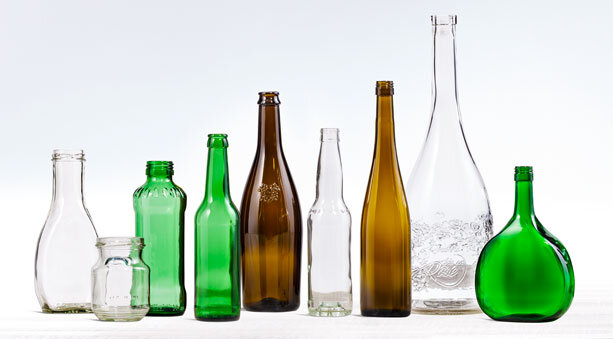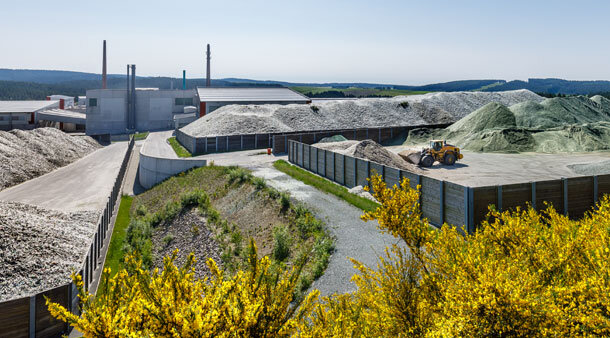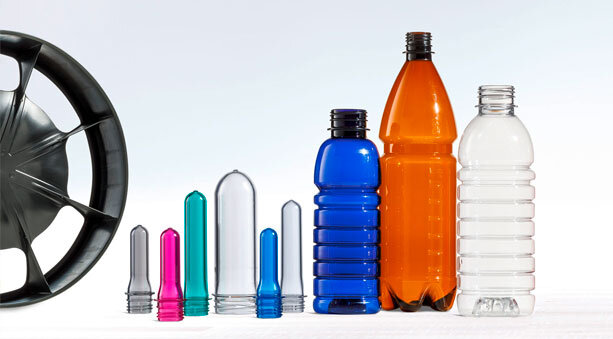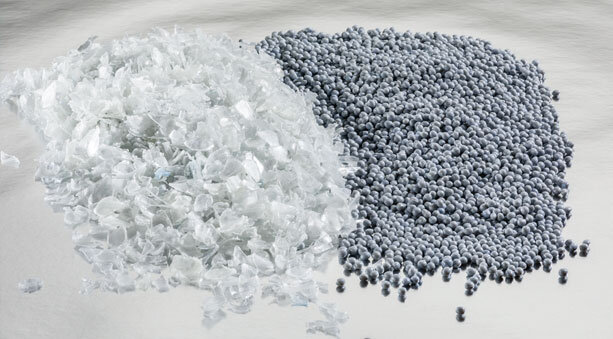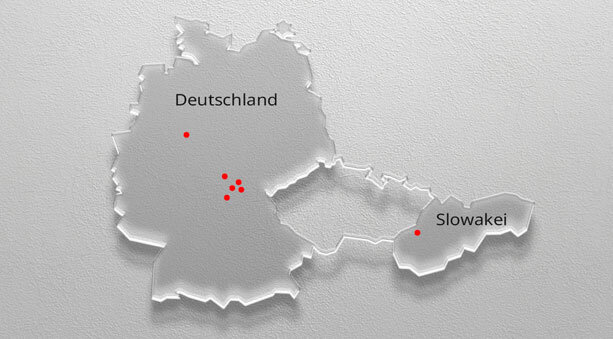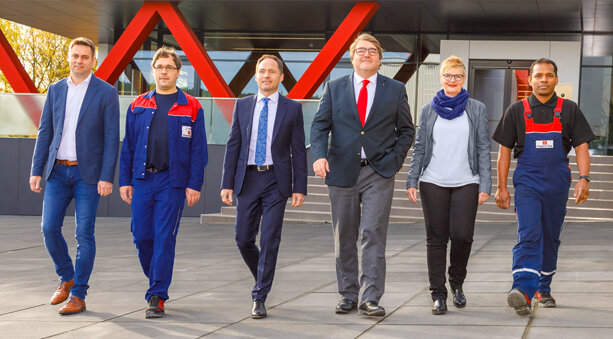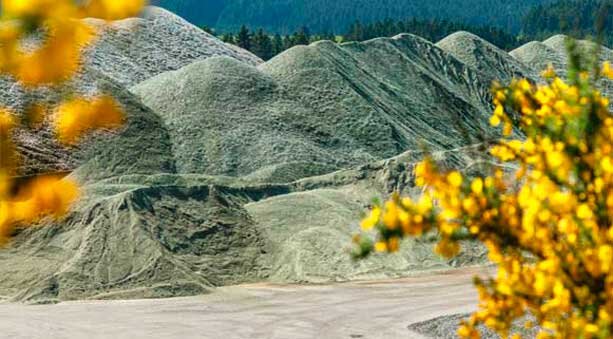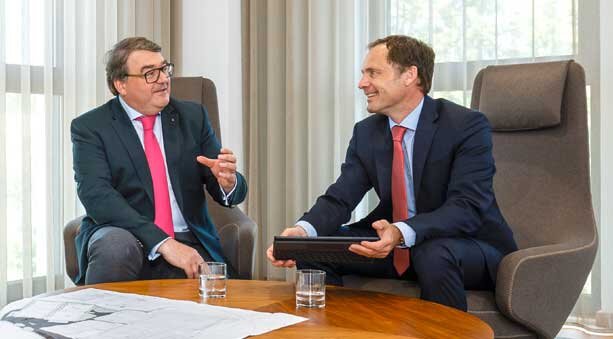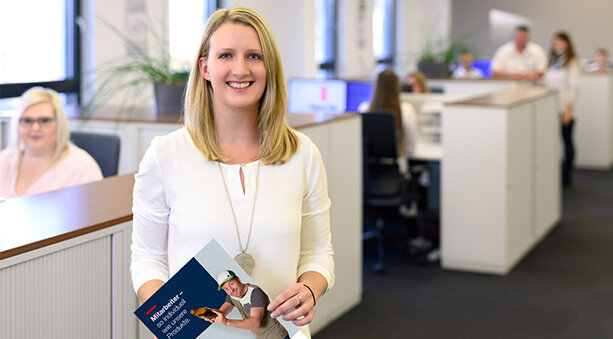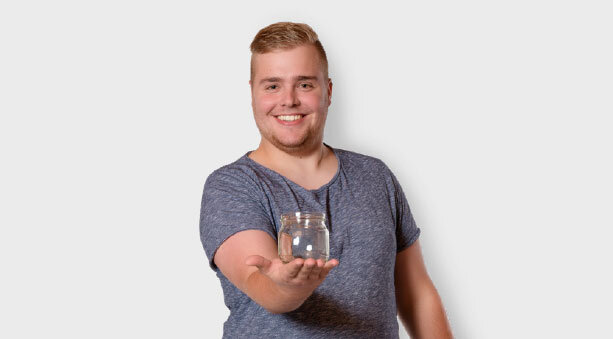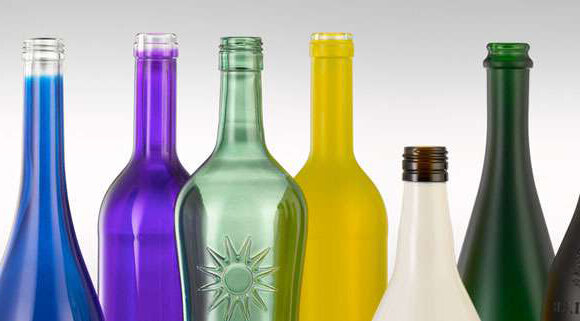The history of Wiegand-Glas
The Wiegand family has been associated with the material glass for about 450 years. The company is thus based on a long tradition. Today, our company group comprises the business untis glass, PET and logistics. Learn more about our history.

1570 is the year in which our family name first was connected with the production of glass. Niclas Wiegand, from Langenbach, starts the hand-made production of drinking vessels in the Rhön, after wood became scarce in the Thuringian Forest. In those days, wood was essential to fire the melting furnaces and to produce potash, the most important raw material for glass production at that time.

Georg Wiegand, called "der Alte" (the old man), glassmaker in Langenbach, is enfeoffed with Fehrenbach.

Kaspar Wiegand settles in Altenfeld, acquires shares in the glassworks there and sowith lays the foundation for the later company. The Altenfeld glassworks was in operation still until 1936.

Daniel Wiegand and Adam Heinz found the glassworks in Schleusingen on the site of the former ironworks "Friedrichswerk".

Otto Wiegand founds the Neustädter Glashüttenwerke Wiegand & Schmidt with its headquarters in Neustadt am Rennsteig and in the following years another five production plants in Gießübel, Gehren, Frauenwald, Großbreitenbach (Hohe Tanne) and Dux (formerly known as Sudentengau).

Otto Wiegand acquires the glassworks in Steinbach am Wald – a purchase which proves to be important for the further development of the glass history of the Wiegand family. After the Second World War, all the works were expropriated, except for Steinbach am Wald.

Otto Wiegand has the first semi-automatic machine set up in the Steinbach am Wald glass works. The once single-stage process, in which the hot glass still had to be laboriously blown out with the glassmaker's pipe to produce finished containers, is now being replaced by the new two-stage technology. This is a huge change for the employees in the glass works, as blowing out by mouth is no longer necessary. More and more containers can be produced at ever increasing rates. The production of beer bottles enters the market.

The glass factory in Steinbach am Wald comes to a standstill during the economic crisis of 1930. The Franconian glassmakers are working hard in every way possible to increase glass sales in the Franconian Forest again. So in 1931 the glassworks Steinbach am Wald was renamed Bayerische Flaschen-Glashüttenwerke Wiegand & Söhne - because Bavarian brewers preferred to buy their glass in a Bavarian glassworks.

In 1903 Michael Joseph Owens invented the automatic glass-blowing machine. It marks the beginning of a revolution in the glass industry. In 1941 the first fully automatic machine arrives in Steinbach am Wald. The glassmaker's pipe and semi-automatic machines become history. The foundation for the production of millions of glass containers per day has thus been laid.

In the early 70s Wiegand-Glas was already intensively engaged with the idea of using waste glass as a secondary raw material and installed the first glass recycling plant in Steinbach am Wald. After all, waste glass is not rubbish, but a raw material. It was a project which at the time was ridiculed by many, but which turned out to be extremely forward-thinking. Today, waste glass as a raw material is more important than ever.
Wiegand-Glas is also a pioneer in the collection of waste glass at that time and organises the first public glass collection in the district of Kronach together with the Bayerische Rote Kreuz (Bavarian Red Cross) in 1974.

Since the foundation of F+V Frachtabfertigung und Versicherungsdienst GmbH & Co. KG in Steinbach am Wald, we have relied on our own transport company, which we have continuously expanded. Since 2015 all transport and logistics services of the Wiegand-Glas company group have been operating under the roof of Wiegand-Logistik GmbH.

Wiegand-Glas starts to establish international relations for exchanging ideas on technical issues very early on and becomes a member of the IPGR (International Partners in Glass Research) just one year after the foundation of this worldwide research group. Today, managing director Oliver Wiegand is the deputy chairman of this association. The original, common goal of all participants: improved competitiveness of glass containers compared to alternative packaging by increasing the strength of the glass and reducing its weight. In addition, and most likely the topic for the next decade, is the improvement of energy efficiency in glass melting and the associated reduction of emissions.

As early as the 80s, the glass industry was called upon to reduce the NOx emissions of the furnaces. Wiegand-Glas develops the LoNOx melter together with a well-known furnace construction company. This furnace is characterised by its low energy consumption and NOx emissions far below the then applicable limit value of the TA-Luft (Technical Instructions on Air Quality Control), while maintaining consistently good glass quality. The furnace is still a benchmark for the European glass industry today. Incidentally, the residual energy contained in the exhaust gas is exploited by recuperative preheating of the combustion air and preheating of the cullet.

Already in December 1989, Wiegand-Glas negotiated with the VEB Großbreitenbach about a joint-venture. It was immediately clear to the management that the glassworks, according to western standards, would be unprofitable and that development work would be necessary in the truest sense of the word. Without knowing whether state subsidies could be expected, the decision was made to build up a new glassworks. After a terrific construction period of under 10 months, the start-up of the first furnace in the new glass factory was in January 1991. Thus, the Wiegand family returned to their roots in the Thuringian Forest. In 1993, Wiegand-Glas took over the remaining shares from the Treuhand.

Together with a well-known glass machine manufacturer, Wiegand-Glas develops the new generation of forming machines, the NIS.
In this fully automatic glass machine, almost all pneumatically driven mechanisms found in conventional machines are replaced by servo-electric mechanisms, which results in a higher stability for the glass processing. All machine movements are precisely adjustable and exactly reproducible, thus achieving shorter set-up times and greater flexibility in the production programme. By dispensing with pneumatic drives, compressed air is saved; at the same time, the noise pollution of the machine operators is significantly reduced.

In Steinbach am Wald, Wiegand-Glas commissions the world's first industrial coating plant which is fully integrated into an existing production line and thereby sets further standards in terms of innovation. Glass packaging is now up to 30 per cent lighter and 40 per cent stronger.
With this technology, developed and patented within the IPGR research community, the glass container is coated with a 0.005 mm thin polymer skin in-line in an immersion bath. In 1999, another PAS plant was installed at the Steinbach am Wald site, but the PAS technology could not establish itself on the market.
However, with Wiegand-Glas polymer technology the starting signal for in-house decoration is sounded. Ongoing development work enables coloured coating and matting of glass containers as well as UV protection of foodstuffs using appropriate coating lacquers. Despite this, there are thoughts of finding an off-line solution for bottle decoration, and almost ten years later, a bottle coater with even more individual design options replaces the in-line process.

In the 90s, disposable PET entered the soft drinks sector and initially replaced returnable glass packaging. In order to keep our existing glass customers, the two managing directors Nikolaus Wiegand and Oliver Wiegand make the strategically important decision to enter the PET business. The necessary know-how for the production of PET preforms is gained through the participation in the Swiss company FEMIT Plastic AG. With the well-functioning network of the innovative partner and its own trained specialists, PET-Verpackungen GmbH Germany has been participating in the great triumphal march of the disposable PET bottle in Germany since 1999 and 2000. The cooperation with Femit ends in 2001 with the sale of the shares.

By founding Glas-Cycle GmbH with the participation of Wiegand-Glas and the complete takeover of all shares in 2006, Wiegand-Glas intensifies its commitment in the recycling sector. The motives for founding the company at that time were the increasingly strict waste management regulations. In addition to third party materials, it is above all the residual materials from the used glass processing in Steinbach am Wald that have since been reprocessed in Wandersleben; recovered raw materials are returned to the markets and residual waste is thus reduced.

With the foundation of Nampak Wiegand Glass (Pty) Ltd. as a joint venture, Wiegand-Glas intensifies its activities in the southern hemisphere, which, prior to its own participation, had been running for years in the form of a Technical Assistance Agreement with Nampak Glass.
The time in South Africa ended with the sale of the shares in 2012.

Wiegand-Glas is already showing increased commitment to the central and eastern European markets at the beginning of the new millennium. This was followed by the foundation of Wiegand-Glas Slovakia k. s. in 2006, which strengthens distribution and with that the position in Eastern Europe and is also used as a forwarding agency. Today Wiegand-Glas still operates successfully with a sales office in Trenčín from which it serves customers in countries such as Slovakia, Hungary, Czech Republic and Poland.

Due to constant adaptation of the tool and machine park, PET-Verpackungen GmbH Deutschland is one of the most renowned preform manufacturers in Europe today. The rapid growth reflects the breakthrough of the PET bottle on the international beverage markets. We are expanding our product portfolio and from now on we also offer PET containers in one- and two-stage processes.

After initial attempts to decorate bottles with the PAS at the end of the 90s, Wiegand-Glas offers its customers the greatest possible range of individual design possibilities by installing a bottle lacquering line. The equipment is installed at the Steinbach am Wald site and is suitable for both small and large series. Whether colour or frost effect, fluorescent coatings or metallic gloss, with UV protection to protect the contents – the customer is free to choose with Wiegand-Glas. And Wiegand-Glas also keeps its promise to protect the environment: The lacquering line works in a completely environmentally friendly manner with solvent-free water-based paint.

Wiegand-Glas develops a batch preheater together with a supplier. In this unit the hot waste gases arising during the glass melting process are passed through the mixture of raw materials and cullet, the batch material. The preheated raw materials are fed directly into the furnace. The use of a batch preheater saves a considerable amount of energy and sowith CO2. In 2013, the second preheater was put into operaton at the Steinbach am Wald plant.

Acquisition of Vitrum Holding AG with its German subsidiary Thüringer Behälterglas GmbH Schleusingen. Wiegand-Glas thus extends its product portfolio to the food sector and secures its position in the beer bottle market.

PET-Verpackungen GmbH Germany extends its container portfolio to the production of hot-filled containers and takes over the sales and marketing activities of LOG GmbH.

Start of our service centre at Schleusingen plant: In a highly automated process, bottles and jars are fully assembled with swing stoppers and put into crates or cartons right before the delivery to the filling line. Manual assembly of swing stoppers and packing are no longer necessary, representing a real added value for the customer.

Through the acquisition of Glaswerk Ernstthal, Wiegand-Glas is establishing a dominant position in the spirits segment and expanding its product portfolio in the food, water and wine markets. The proximity of all four glass locations to each other is proof of the group's confidence in the economic strength of the region and its workforce.

In Großbreitenbach a new production line is put into operation for the customer Lightweight Containers B. V. From now on, the wide product range will also include large PET containers up to 30 l. inclusive of the corresponding large preforms.

With ultra-modern technology, we expand our product portfolio in Großbreitenbach to include technical injection moulding. Among other things, PET-Verpackungen GmbH Deutschland offers its customers add-on parts for the KeyKegs such as handles or base parts.

Bayerische Flaschen-Glashüttenwerke Wiegand & Söhne GmbH & Co. KG is renamed to Wiegand-Glas Holding GmbH to reflect its purpose as a holding and management company. Central services for all individual companies within the company group are provided from its location.

Wiegand-Glas reacts to the increased demand for glass and builds a completely new glass plant with two melting furnaces on a greenfield site, directly adjacent to the old glass plant in Schleusingen. With state-of-the-art production, inspection and packaging technology, we are expanding our capacities and meeting the ever-increasing quality requirements of our customers. In addition to efficient production and greater production diversity, we are also significantly improving our ecological footprint with the new furnaces and equipment. After less than two years of construction, the first machine was put into operation. In the future, the traditional production of jars and bottles will continue in Schleusingen with two furnaces and seven production lines and will be expanded to include other standard and customised containers.
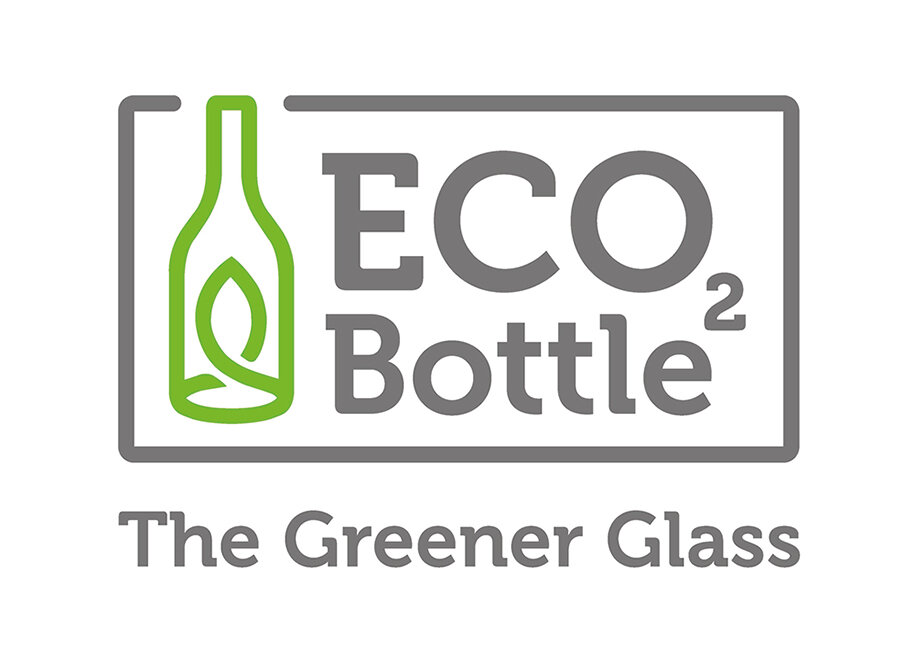
With the Eco2Bottle concept, we enable our customers to improve the CO2 balance of their filling goods via climate-neutral packaging. The Eco2Bottle brand stands for a recycled glass content of up to 98%, reduced container weight, 100% green electricity from hydropower, optimal utilisation of loading space and climate-neutral gas consumption. Upon request and in cooperation with our customers, we apply these measures to their containers. A logo embossed in glass as well as the Eco2Bottle seal signals to consumers at first glance that they are holding a sustainable product.
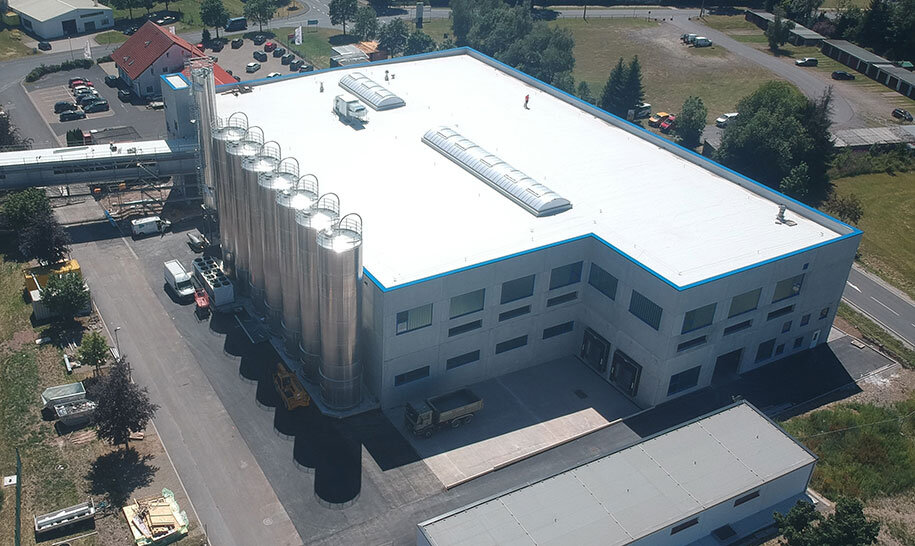
Wiegand-Glas has been a pioneer in glass recycling for decades. At the Großbreitenbach site, PET-Verpackungen GmbH Deutschland is now also starting to recycle PET. We have been using recyclate in our products since the beginning of the 2000s. The purity of the re-granulate used plays a very important role for us, so we decided to invest in state-of-the-art PET recycling technology. After only about one year of construction, we can process around 700 million PET beverage bottles per year in our own plant to produce new preforms and containers from them.
Our business group at a glance
